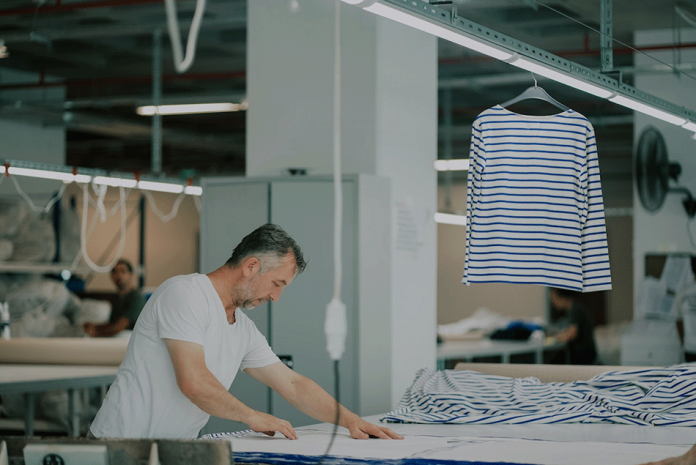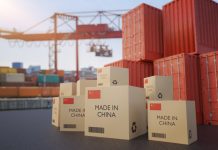By Indiana Lee
As consumers grow more eco-conscious, sustainability has emerged as one of the primary goals across most industries. In a recent Global Consumer Insights Survey, 81% of respondents said they expect brands to be more environmentally conscious. As a response, retailers now have a real appetite for sustainability, with 77% of leaders in the industry agreeing that sustainability investments are now a top priority.
This is good news across the board, but it does mean that any retailers not changing their supply chain will quickly get left behind. Thus, it is imperative to make sustainable upgrades if you want your business to remain competitive in the market.
The Three Elements of a Sustainable Supply Chain
Of course, going green isn’t just about appeasing eco-friendly consumers. As brands have a significant impact on the world in many ways, they have a responsibility to be more conscious of their behaviors.
Fast fashion brands, for example, are effectively killing the planet one cheap item of clothing at a time. A large percentage of carbon emissions come from clothing production as is, but the fast fashion industry is one of the worst.
Because fast fashion produces high volumes of clothing cheaply and sells them for large profits, they are one of the biggest contributors to fashion waste. Mountains of garments end up in landfills, which is detrimental to the environment.
There is also the issue of worker safety when it comes to fast fashion brands. Most of these companies care little for ethics and worker safety, with their factories running on low wages, poor conditions, and unhealthy demands placed on workers.
All of this is to drive home the point that retailers have more than just a responsibility to please their consumers; they have an obligation to do better to protect the world. And this leads us to the three key elements of supply chain sustainability:
- Environmental responsibility: Protecting the environment from harm caused by supply chain processes, like production, packaging, transportation, and storage.
- Financial responsibility: Addressing the financial needs of the business with certain factors in mind, such as compliance with financial laws and regulations, risk management, financial planning, and insurance coverage.
- Social responsibility: The ethics, principles, morals, and philanthropic expectations of society from the business. This means fair trade practices, ethical sourcing, and ensuring workers are treated fairly and in line with human rights requirements.
Best Practices for Building a More Eco-Friendly Supply Chain
Keeping the above elements in mind, the following are best practices for building a more sustainable supply chain:
Identify Sustainability Issues
To start, identify the issues that exist within your supply chain management. Carefully analyze all processes by breaking the supply chain pipeline down into its various segments to get a clear idea of areas that need improving.
Adopt a Circular Supply Chain
After identifying sustainability issues, you can then start adopting a more circular supply chain. This involves recycling raw materials back into the production process instead of products ending up as waste after use. This is done by implementing a program where certain products and materials are sent back to the manufacturer for reuse.
Reduce Fuel Consumption
As a major part of the supply chain is the transportation of goods and materials to and from manufacturers, finding ways to cut fuel costs is another essential step in becoming more sustainable. Implement Safe and Fuel Efficient Driving (SAFED) training for drivers and find ways to eliminate dead mileage when your haulage fleets are returning after transporting loads.
Use Ethical Sourcing and Green Packaging
Consumption of resources and packaging waste are two major factors contributing to the carbon footprint of supply chains. For example, e-commerce alone used nearly 2.1 billion pounds of plastic packaging in 2019.
Using more sustainable packaging is vital when you’re attempting to build a more sustainable supply chain. However, it’s not just the packaging but the procurement of all production materials that you must consider, and this brings us to the next point: your suppliers.
Engage Sustainable Suppliers
While some retailers directly procure materials to create their products and packaging, many use suppliers. And while you don’t necessarily have control over your suppliers’ operations, you do have control over which suppliers you choose to work with.
You can choose to cut ties with certain suppliers to find ones that are more eco-conscious in their operations. Or sit down and engage with your current suppliers to discuss code of conduct and sustainability improvements.
Implement Ethical Labor Practices
Keeping in line with the social responsibility element, you must also evaluate your labor conditions to ensure employees are treated fairly and equitably. Labor exploitation is a widespread issue, and it must be stopped, which starts with changes in how supply chains are managed. This includes treating your own workers fairly but also making sure your suppliers have ethical labor practices.
Utilize the Right Tools
Sustainable supply chain management focuses on cost, speed, reliability, and optimization. It’s about strategic decisions that include sustainable sourcing, packaging, production, and optimized delivery of goods. One of the best ways to tackle all of these things is to use smarter supply chain management tools.
The right tools can help you build a more sustainable supply chain and future-proof your business. With the help of these tools, you can streamline operations to cut down on waste and emissions, reduce chances of human error, keep better track of materials and stock, find ways to recycle and repurpose excess inventory, and even monitor labor market trends. Such tools include internet-of-things devices; for example, automated refrigeration monitoring sensors, fleet management and logistics solutions, and sensors that help minimize fresh food spoilage.
In Conclusion
As more companies turn toward sustainable operations and more consumers demand sustainability, adopting a greener supply chain will be paramount if you want to remain a competitive player in the market. Furthermore, adopting sustainable practices will also future-proof your business and ensure you continue to grow and remain profitable long-term.
About the Author
 Indiana Lee is a writer, reader, and jigsaw puzzle enthusiast from the Pacific Northwest. An expert on business operations, leadership, marketing, and lifestyle.
Indiana Lee is a writer, reader, and jigsaw puzzle enthusiast from the Pacific Northwest. An expert on business operations, leadership, marketing, and lifestyle.





































